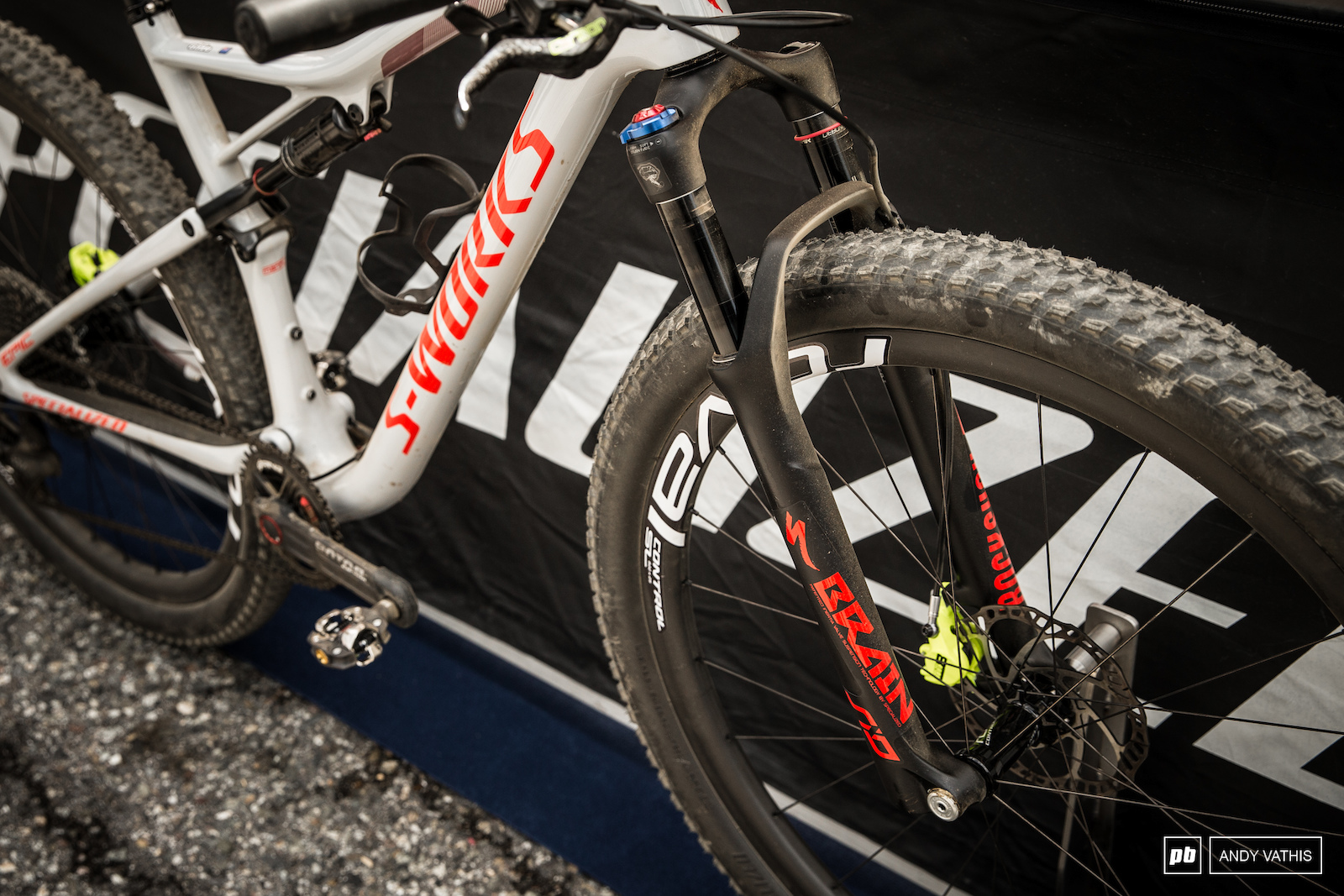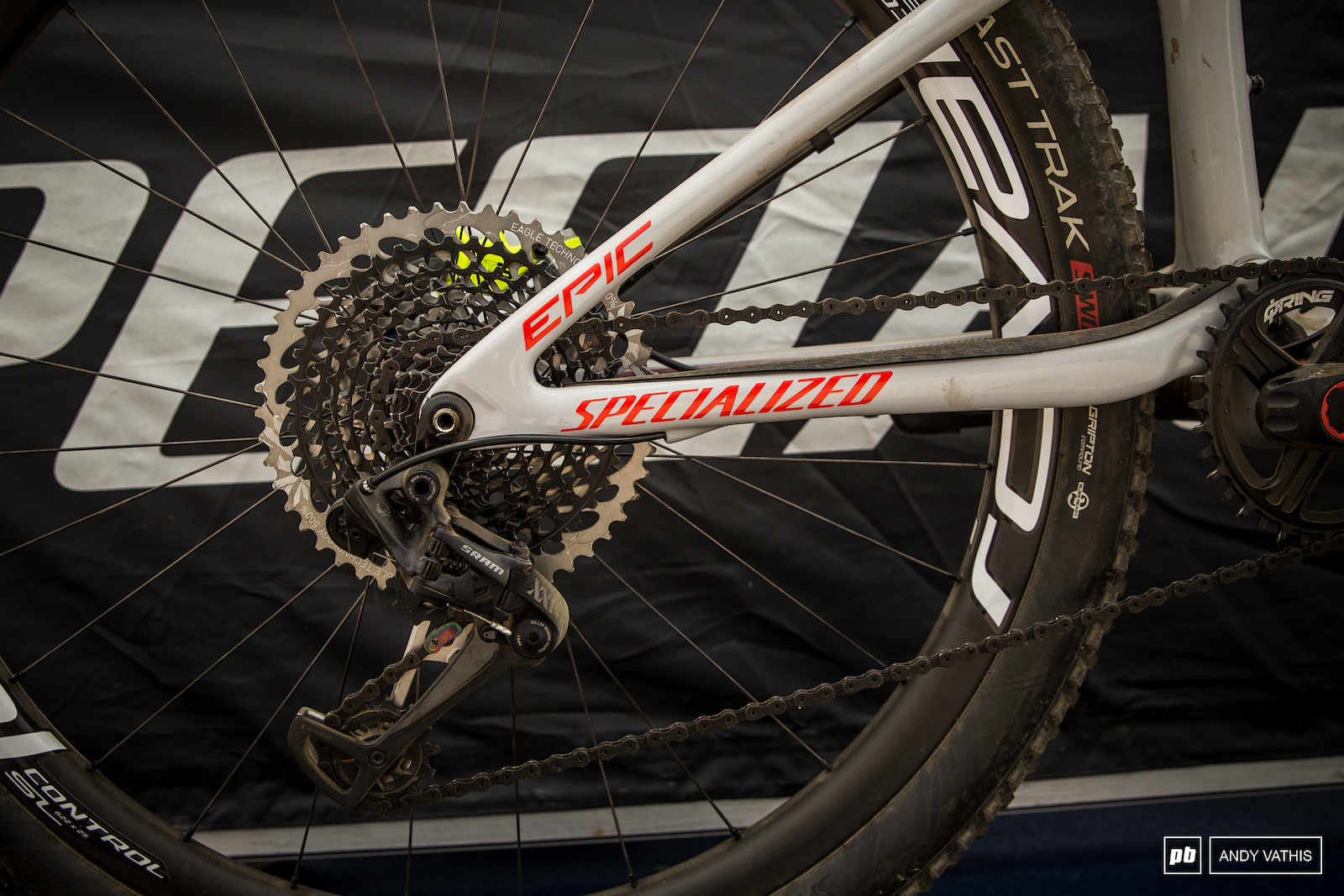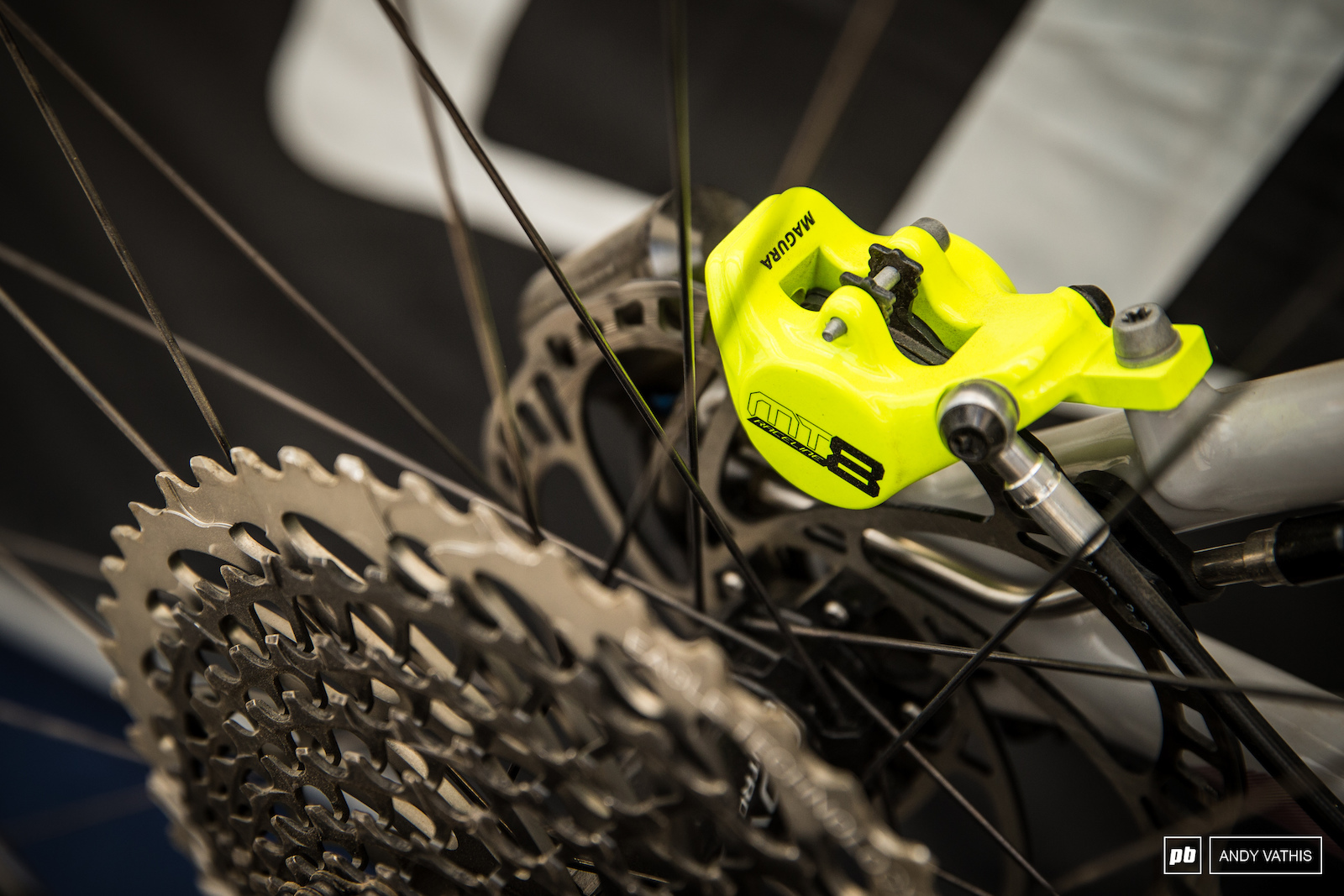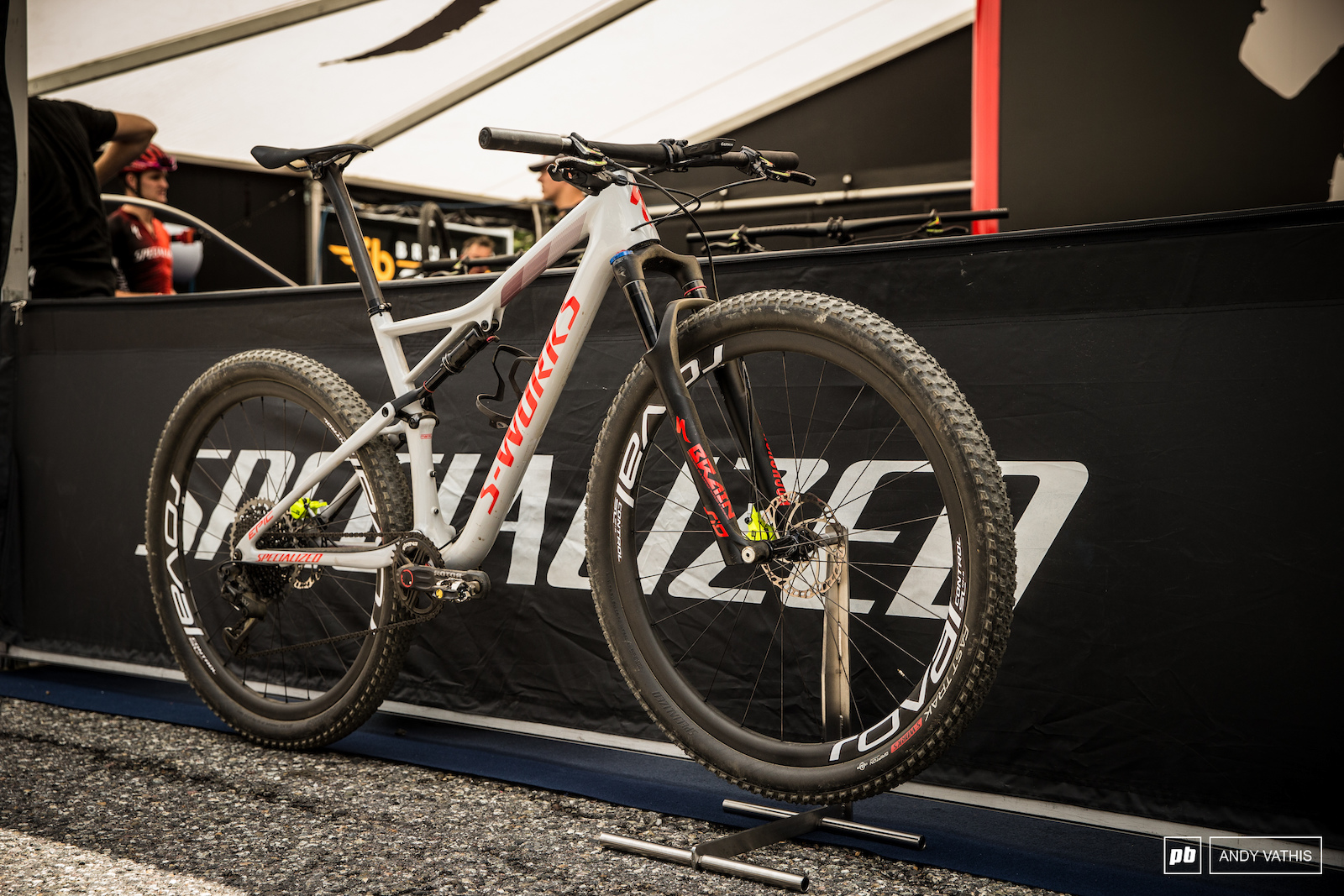Bike Check: Sam Gaze's S-Works Specialized Epic - Vallnord World Cup XC 2019
Sam Gaze is riding Specialized's full-suspension Epic XC bike this weekend in Vallnord. The two-time U23 World Champion and winner of the first World Cup of 2018, in Stellenbosch, is always one to watch for a solid result.
His S-Works Epic is kitted out with Specialized's house brand Roval wheels, Specialized handlebars, and a 130mm long stem with -24 degrees of drop. Magura brakes slow things down while Specialized's S-Works Fast Trak tires put traction to the ground. The drivetrain is a Rotor Crankset with a Q-ring coupled with a SRAM XX1 Eagle derailleur and cassette. Suspension duties are handled by RockShox with a 100mm travel SID up front and then a RockShox/Specialized collaboration shock in the back.
S-Works Epic Details
Frame: Specialized S-Works Epic
Shock: Specialized Brain, 100mm
Fork: RockShox SID with Brain, 100mm
Wheels: Roval Control SL
Tires: Specialized S-Works Fast Trak, 26-27psi
Drivetrain: SRAM XX1 Eagle
Crankset: Rotor
Brakes: Magura MT8
Bar/Stem: Specialized
Seatpost: Specialized
Saddle: Specialized
More info: www.specialized.com
A SRAM XX1 Eagle drivetrain coupled with Rotor Cranks and a Q Ring
Magura MT8 brakes are lightweight and powerful.

Specialized's BRAIN suspension system is an inertia valve that keeps the suspension firm, minimizing bob from a rider's pedaling forces, until the bike hits rough terrain where it opens up to smooth things out.

The fork is a RockShox SID, also with Specialized's BRAIN platform. Sam runs the fork with the BRAIN at around 50%, leaving it not totally firm at all times.

130mm long with quite a bit of drop and no spacers to be found, Gaze is as low over the front end of the bike as possible.
Specialized seatpost and saddle with Look pedals.
Author Info:
Must Read This Week
Sign Up for the Pinkbike Newsletter - All the Biggest, Most Interesting Stories in your Inbox
PB Newsletter Signup















If he ran a larger size he'd have a taller head tube, and likely not get the power out of the glutes he'd like. I also find it a challenge to get low enough at the front on contemporary 29ers.
I’m about the same height as Mr Gaze, and I used to have a ‘16 Epic in L, and an ‘18 in XL. Size charts put me firmly in XL land. Both bikes worked fine for me, the small bike felt faster, but it wasn’t faster on the stopwatch. And the XL was so much safer and faster on the downs.
I should probably STFU, but there is also the message this sends to buyers: size down, and just throw all the manufacturers recommendations in the trashbin.
I guess someone should have told him he was supposed to be racing **last** weekend! Perhaps that explains his 83rd?
I highly suspect this is the geometry they grew up racing, and haven't bothered to change it. Especially for Kulhavy, Specialized didn't make a bigger bike (and their bikes are on the smaller side), so he just lived with it.
If you really dig into it, a steeper SA would eliminate the need to have the bars so low to keep the front wheel on the ground on steep climbs. This change would also radically reduce the amount of energy spent on keeping the front wheel down and allow more energy towards pedaling. Stretching the front end would fix the TT being too short with the steeper SA. A more balanced position with the longer front center would improve cornering and allow for a slacker front end. Nobody wants to be the first to try it though, again due to risk.
Not too many years ago I refused to purchase a frame that had an HA less than 70*. Now I am on one of the more progressive bikes with a 64* HA and climbing way faster and more comfortably than ever. I AM NOT ADVOCATING FOR HA'S THAT SLACK FOR XC. I do believe they will keep falling though probably to the 66* range.
I get that he might prefer a nimbler handling bike with the shorter wheelbase and all, but then to slap on a 130mm stem to get more reach, negating the handling benefits of the smaller bike—you end up with a twitchy bike with slow steering. It doesn’t take a rocket scientist to figure out he needs to go up a size or two.
That said I don’t know what the terrain looks like. If it’s a smooth course then it’s probably fine.
What he's saying is you will lose glute activation if you go with a steeper STA. Glutes are more powerful than quads.
However, triathlon bikes have a very different position from TT bikes (in part) to preserve muscles used on the run, so not quite an apples-to-apples comparison
Seat tube angles got steeper to clear the rear wheel travel for a 29 wheel; so then the reach has to get longer if you want to maintain the position of the torso, and then you need a shorter stem.
I have ridden standard SA's back to back with new school SA's on both regular fire road climbs and very technical steep climbs. There is not a single situation where the traditional geo is better and the only place where it is a wash is on the flat sections of trail. Don't confuse tradition with superiority. Two years from now everyone will be asking why we rode the old geometry for so long.
18 months ago everyone thought the guys from Pole and the builders of the Geometron were insane including me. Now Specialized is building bikes with progressive geometry that are very close to what those pioneers were building. Almost every manufacturer has trickled significant geometry changes down to their short travel trail bikes for a reason.
I'm willing to bet most of the posters in this thread who are obsessed with arbitrary STA and HTAs wouldn't be able to drop me on my Scale. Outside of an enduro or DH course there isn't much difference in speed between a trail bike and an XC bike.
There is a limit to how far forward you can get relative to the bb. My priority is power production, not down-hill handing. And I do almost all my training on a flat surface. I reckon pros are interested in the same type of riding. Just look at their training. 4, 5, 6 hr rides?
Take your 75 or 76 degree steep seat tube bike, and shorten the reach by 10 or 15cm. Leave everything else the same. I reckon you won't be making as much power out of the glutes and hammies. You'll be sitting upright. It's not the seat tube angle that's making you more powerful. Bicycles and their geometry is not where power comes from. It comes from muscles.
@trundle the seat tube is kinked at the bottom, not the top. Steepening the actual SA (the Slash has a very slack true SA) would give them even more room if they needed it. My point was that steep SA's are not a result of long travel 29's needing the extra space.
Also the fact that you think moving your seat would result in a longer reach/front center means that you have no understanding of what reach is or how it is measured. Reach is a hard measurement from the center of the BB to the center of the top of the head tube on the horizontal plane. Running a 30 mm setback post on anything steep would require a tremendous amount of energy to keep the front wheel down taking away from your power available to put into the pedals.
It may be the best bike you have ridden to date, but it is obviously way too small for you if you are having to run such an extreme setup. I was guilty of the same thing when I switched from BMX to MTB in 1988. I rode medium frames with 120 mm stems because that was the trend back then. I was big time into XC riding until about 10 years ago when I started to transition to Enduro
One last note is that you cannot keep the same reach when you run a steeper SA. It is like running the same TT when you change from 690 mm bars to 800. Everything is interconnected.